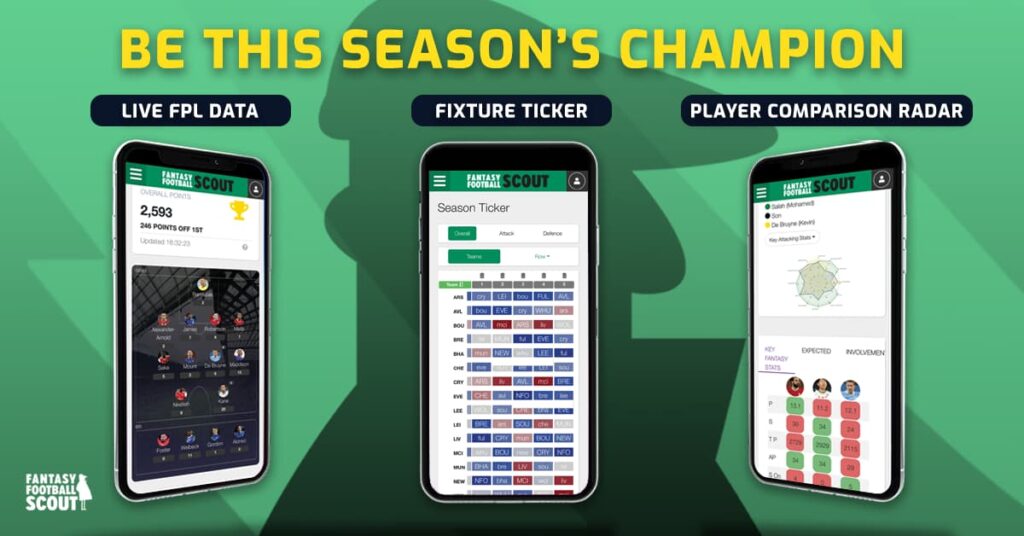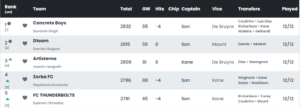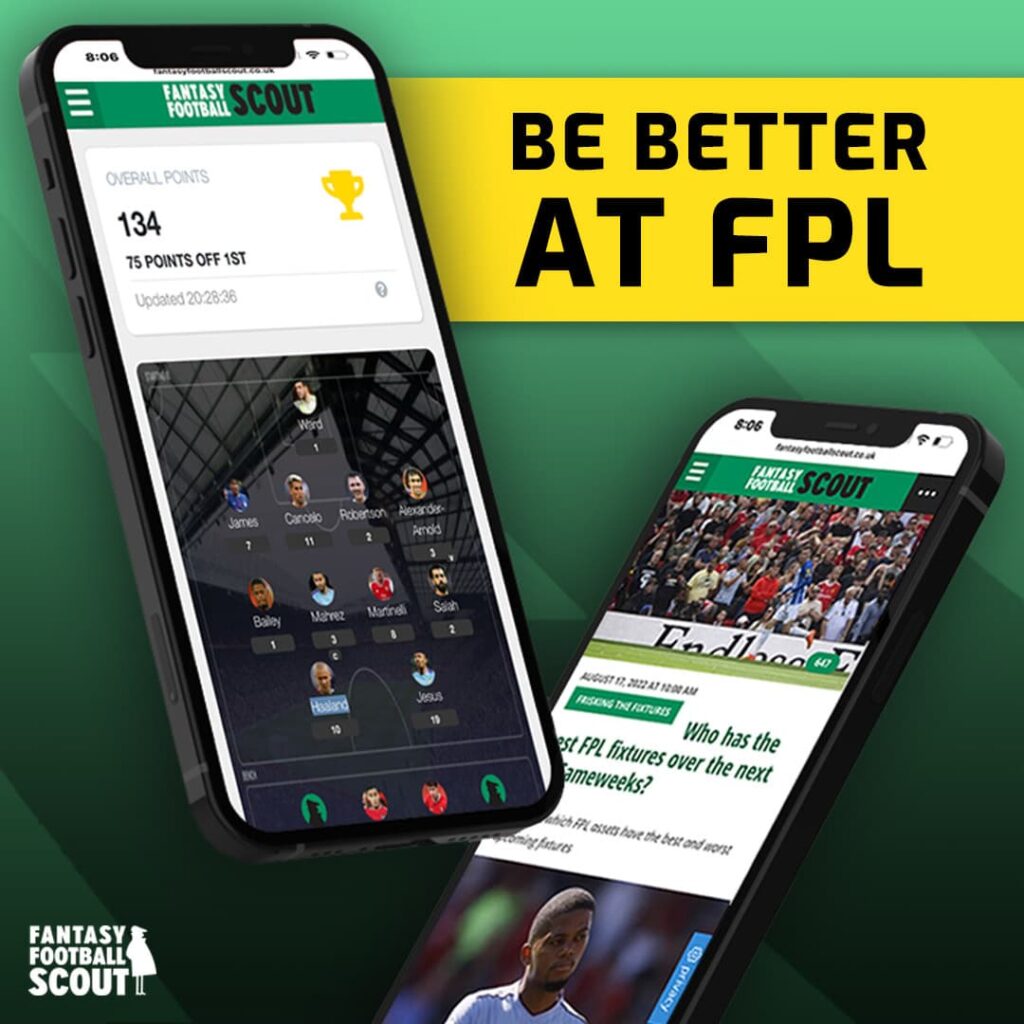Our team of Pro Pundits, Hall of Famers and guest contributors have returned to offer their Fantasy Premier League (FPL) insight, tips and advice during the new season, with only Premium Members able to access every single article they write.
Here, former FPL champion Simon March takes a look at how we may go about identifying the next Fantasy bandwagon.

Wayne Gretzky, who many believe to be the greatest ice hockey player of all time, once said, “A good hockey player plays where the puck is. A great hockey player plays where the puck is going to be.” Similarly, in his autobiography, Italian midfield great Andrea Pirlo (when not ruthlessly mocking his good friend Gennaro Gattuso) states, “Your classic midfielder looks down and sees forwards. I’ll focus instead on the space.”
Both these quotes essentially arrive at the same conclusion; you can be successful by using the information available to you right now but to be truly great requires the anticipation of what will happen next.
These realities are very evident in FPL, particularly early on in the season where just about enough data exists to tell a story, but nowhere near enough exists to form a conclusion. You can take what information is available to you and make an apparently sensible, well-reasoned move but, now more than ever, there is an argument to look ahead and take an informed chance on what might happen.
While I’m reluctant to mention him in the same breath as Wayne Gretzky and Andrea Pirlo, ‘Face of Fantasy Football Scout’ Az’s moves to bring in Arsenal’s Gabriel Martinelli (£6.4m) and Newcastle’s Bruno Guimaraes (£5.7m) immediately before each began exploding points last season offer good examples of this philosophy paying off. In both cases, there were far more obvious and ‘safer’ moves that could have been made and much more data to support them but, by looking forward instead of backwards, Az achieved a huge pay-off.
We sometimes refer to these decisions as ‘punts’ and, sometimes they are, but the term tends to undermine the logic that can underlie them. While it is probably unrealistic to expect all punts to work out as well as the two mentioned above did, identifying them is far from just a matter of luck.
How to Spot the Next Big Thing

So how do you go about identifying the next big thing? The first step is to acknowledge the difference between information that describes what has happened and information that indicates what might happen. Descriptive information includes outcomes like goals scored, assists made, clean sheets kept and FPL points scored. It is very easy to look at these data points and believe that they are indicative of what might happen, and indeed they could be, but they lack the context to be reliable in this respect.
Because, right now, we are working off such little data, any outcome can skew the results and appear disproportionate. A couple of clean sheets can make a defence look impregnable and a couple of goals can make a striker look like a superstar. We’re prone to over-extrapolating from these events due to a cognitive bias known as the ‘law of small numbers’; the usually fallacious belief that a small sample will be accurately representative of the bigger picture.
Simply looking at the outcomes ignores the factors that underlie them such as; whether the fixtures were easy or hard, whether one team was missing key players, whether a player scored with his only shot on goal, was the defence lucky to avoid conceding a goal, did the goalkeeper have a worldie, were there new signings looking to impress, was a player playing temporarily out of position or was the team particularly motivated because they’d just been promoted to the Premier League or because they were playing their first home game of the season? All these underlying contextual factors can undermine how sustainable the observed outcomes might be going forward, yet FPL managers will not see them unless they read in between the lines, or look for ‘the space’, as Pirlo describes it.
By observing past performance through a critical lens, we can start to identify which assets might start to drop off but, by looking ahead in the same manner, we can begin to predict which assets might be on the rise.

For example, at the time of writing, no two teams have experienced more contrasting fortunes than Arsenal, who are top of the league with four wins in four and Leicester, who are bottom with three losses and a draw. There is no denying that Arsenal have been impressive, with standout performances from an FPL sense, by the likes of Gabriel Jesus (£8.2m), Martin Odegaard (£6.6m), Gabriel Martinelli, William Saliba (£4.7m) and Oleksandr Zinchenko (£5.2m). They have, however, had a fairly kind run of opening fixtures, several new players looking to make an impression and decent rest periods between matches.
These circumstances are set to change very quickly, however, as Arsenal’s fixtures start to become more difficult (particularly from Gameweek 8), as their resources are stretched by European competition and the initial boost that they’ve received from their new signings will likely wear off.
READ MORE: The football calendar up to the World Cup break
Leicester, by contrast, have had a difficult start to the season fixture-wise and they’ve also made no major new signings. In addition, they’ve had several key players’ heads turned by interest from other clubs. It is only really James Maddison (£7.9m) who has impressed for them so far with two goals and an assist.
However, from around Gameweek 7, Leicester have arguably the best run of fixtures of all teams, no transfer window offering a distraction and no European competition to stretch their resources. If we are to see an uptick in the Foxes’ performances this season, there’s every indication that it will occur around this point.
These are, of course, just two examples to illustrate a point and I am not (currently) arguing that FPL managers make wholesale switches between Arsenal and Leicester assets, but these are the kinds of shifts in contextual conditions that FPL managers need to look out for, and be willing to act on if they want a chance at a ‘great’ rather than ‘good’ season.
What Lies Beneath (Clue: It’s Stats)

Much as I think we need to be wary of investing too much faith in stats at this stage of the season, more broadly, underlying stats can be a great way of identifying under-the-radar players. The vast majority of FPL managers look only at topline stats such as points, goals, assists and clean sheets. More serious managers, however, may be familiar with expected goals (xG, xGI, xA etc) and so on, which helpfully distil the statistical indicators which might contribute to those topline stats (of course, even ‘expected’ stats have their own underlying stats but we won’t go into those right now).

The benefit of looking at underlying stats is that they reflect actions rather than outcomes. A player may have stats that he is getting a lot of good chances yet this might not, yet, be reflected in his FPL points output. It follows, therefore, that this player might be ‘under the radar’ and about to start scoring points, assuming that their statistical output remains the same.
This is essentially the logic behind Scoutcaster and Meet the Manager presenter Joe’s ‘Goals Imminent’ table which gathers stats such as big chances, goal attempts and xG to identify players whose FPL points output is currently underperforming that which might be expected from their stats. Everton’s Anthony Gordon (£5.5m) was riding high ahead of Gameweek 5, for instance, and duly scored against Leeds.
Conclusion

It’s fairly easy to have an average FPL season, quite difficult to have a good FPL season and extremely difficult to have a great FPL season. A big part of why is that the latter necessitates a level of contrarian thought and action, both of which invariably invite some level of risk. It is worth pointing out, of course, that having a terrible FPL season is the easiest thing in the world and taking big risks is often the quickest route there.
But moving beyond the herd doesn’t necessarily rely on high-risk punts. Instead, it can come from shifting one’s mindset from one that is primarily influenced by past events to one that focuses on seeking opportunities in the future based on defined indicators. The goal is ‘low-risk/high-reward’; players that have flown under the radar recently but, with better luck or in different contextual conditions, indicate the potential for high scores.
I’ve discussed a few of the factors, statistics and contextual conditions that might point toward these opportunities but it is, as always, down to each manager to define their own path and methods. What I will say, however, is that statistics without context are often worse than useless, so managers should always look broadly and account for a range of factors when making their decisions. Not only will this process help identify the true hidden gold, but it will also help mitigate the risk that can come with this approach.

